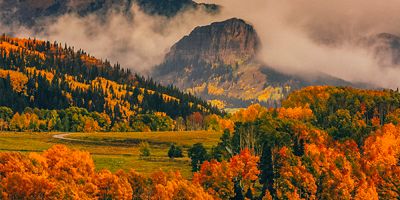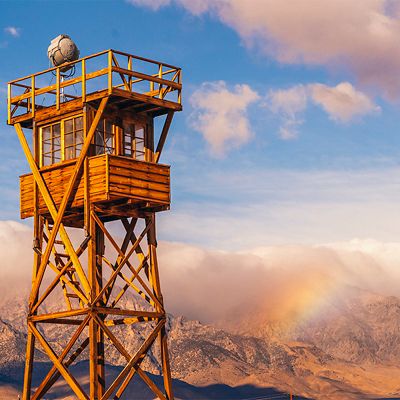Because a park is less visited doesn’t make it less worthy of a visit. It just means you’ll need to try a little harder to experience it. Fortunately, that extra effort is guaranteed to yield extra doses of wide-open natural wonder. And you know you’re due for once-in-a-lifetime levels of wonder and adventure when you’re out on the reaches of the truly wild, roadless, and storm-prone Alaska Peninsula. In this far corner of the country is the overlooked, awe-inspiring Aniakchak National Monument & Preserve.
The center of this stunningly beautiful, 586,000-acre National Park Service site is the Aniakchak Caldera, a 2,000-foot-deep and 6-mile-wide crater that formed after a 7,000-foot volcano erupted and collapsed thousands of years ago. The Aniakchak, a nationally designated Wild & Scenic River, runs through the preserve to the Pacific Ocean. The crater is a popular destination for hiking and the river occasionally draws boaters, but the real draw to Aniakchak is just how challenging it is to visit. Once you’re there, no amenities await you: no trails, no bathrooms, no campsites, and no humans. You’re very likely to see many animals, however.
Due to the tricky access and lack of amenities, the idea of Aniakchak will remain just that—an idea—but the experienced, eager, and patient traveler will be rewarded with a largely untrammeled swath of remote wilderness. Visitors are tasked with creating their own adventure, from backpacking to rafting to wildlife viewing (bears, moose, wolves, and caribou abound). But the very first adventure? Getting there.
Visitation
Between 1989 and 2020, only 10,826 people visited Aniakchak (in 2020 that number was 36, and in a non-COVID year only 100 people visited). You won’t just happen to pass by the park at random, you have to really want to go there. The homepage for the park on the NPS website has a large headline that reads, “No Lines, No Waiting!”
Located about 450 miles southwest of Anchorage on the Alaska Peninsula, Aniakchak is not only far from the lower 48, it’s also far from the population centers of Alaska itself. You can’t get there by car because the park is inaccessible by road. Your best bet is to take an air taxi from King Salmon, Alaska (where the park has its headquarters), which in turn requires an hour-long flight from Anchorage. Keep in mind that frequent foul weather means delays of multiple days should be expected.
Every trip should start at the King Salmon Visitor Center, which is located right next door to the airport (the park’s main departure point). Visiting the park is free and there are no operating hours or restrictions, but weather often dictates those things. And upon park arrival, don’t forget: You are on your own. This is serious and wild terrain and should be approached as such—be prepared for intense weather capable of shredding a tent, cold temperatures, wet conditions, and the potential to encounter bears. The Alaska Peninsula has a high concentration of brown bears, and bear-resistant canisters are mandatory (you can borrow one from the visitor center).










